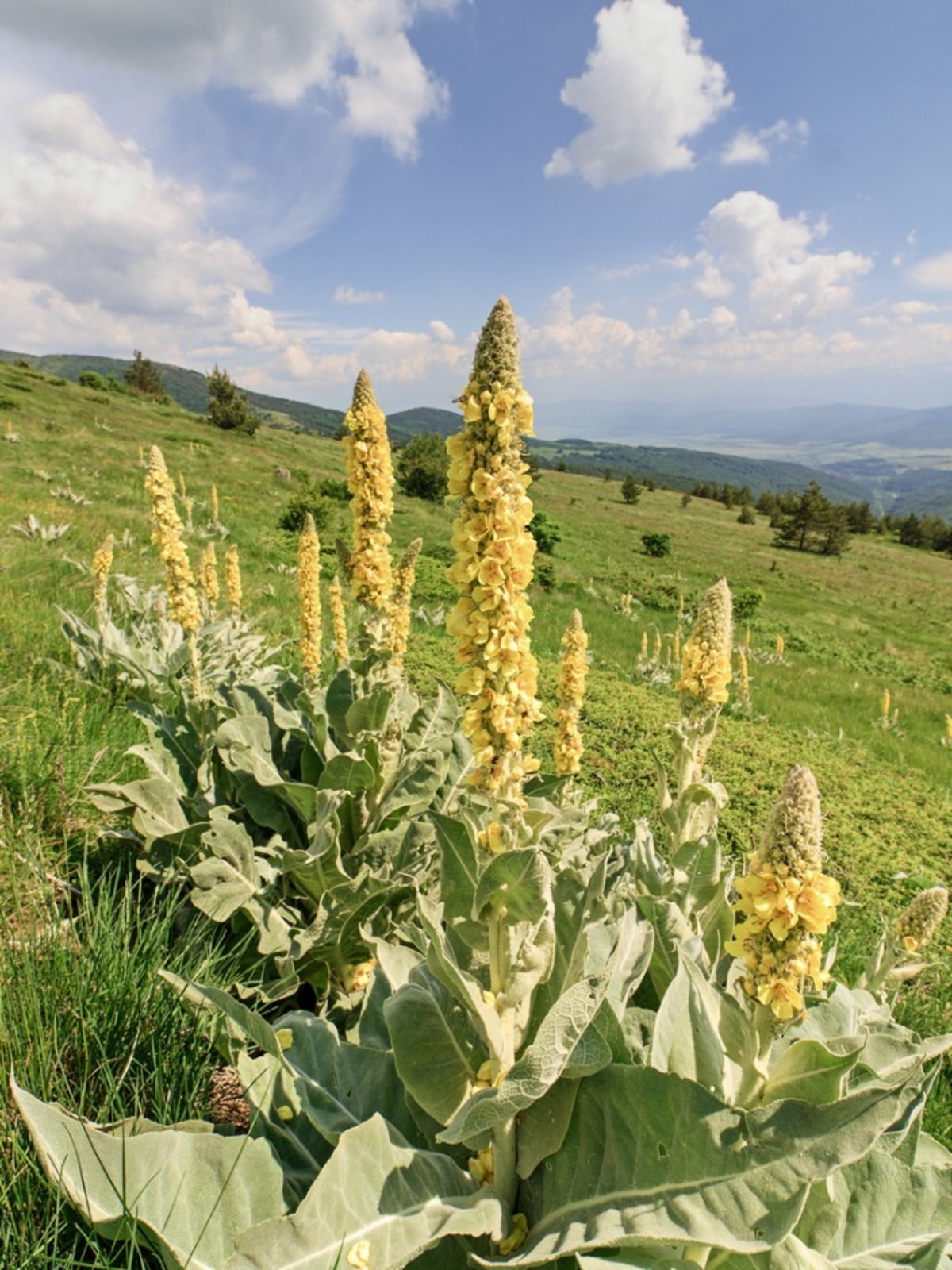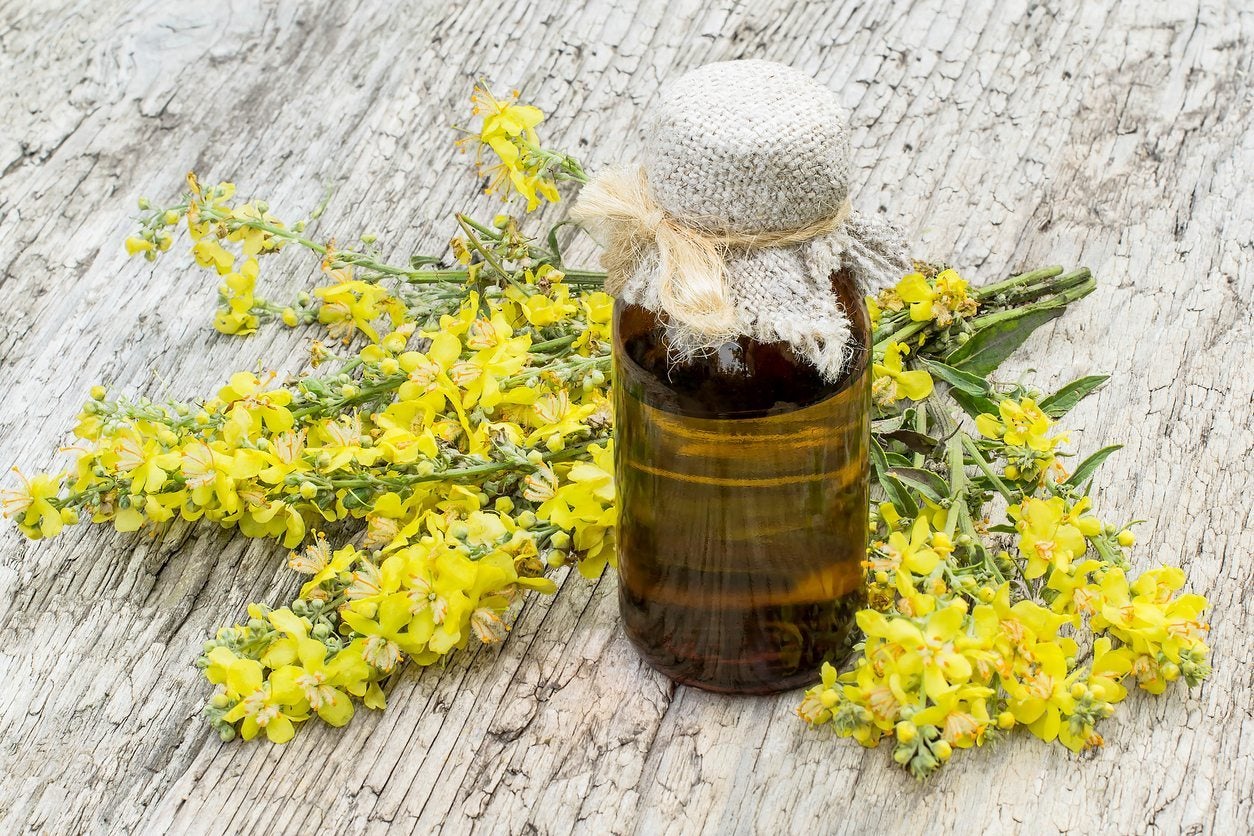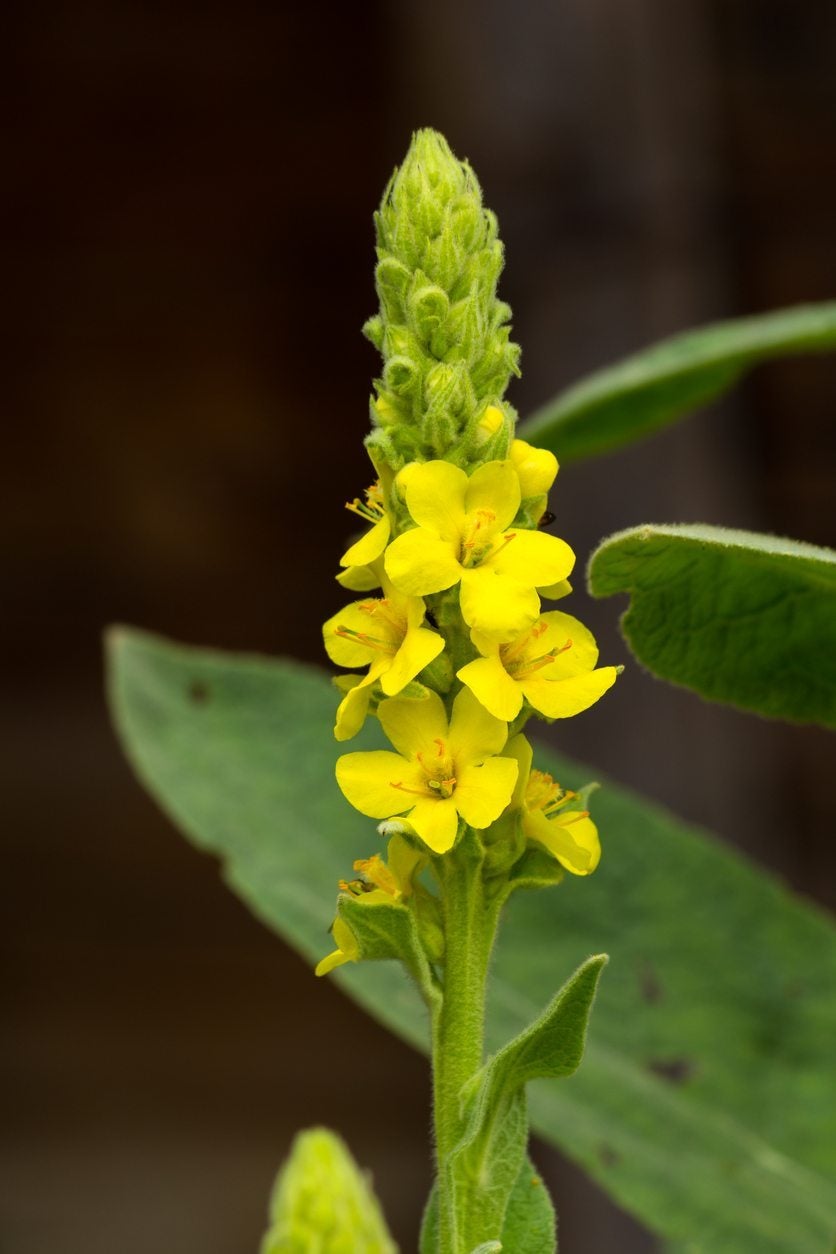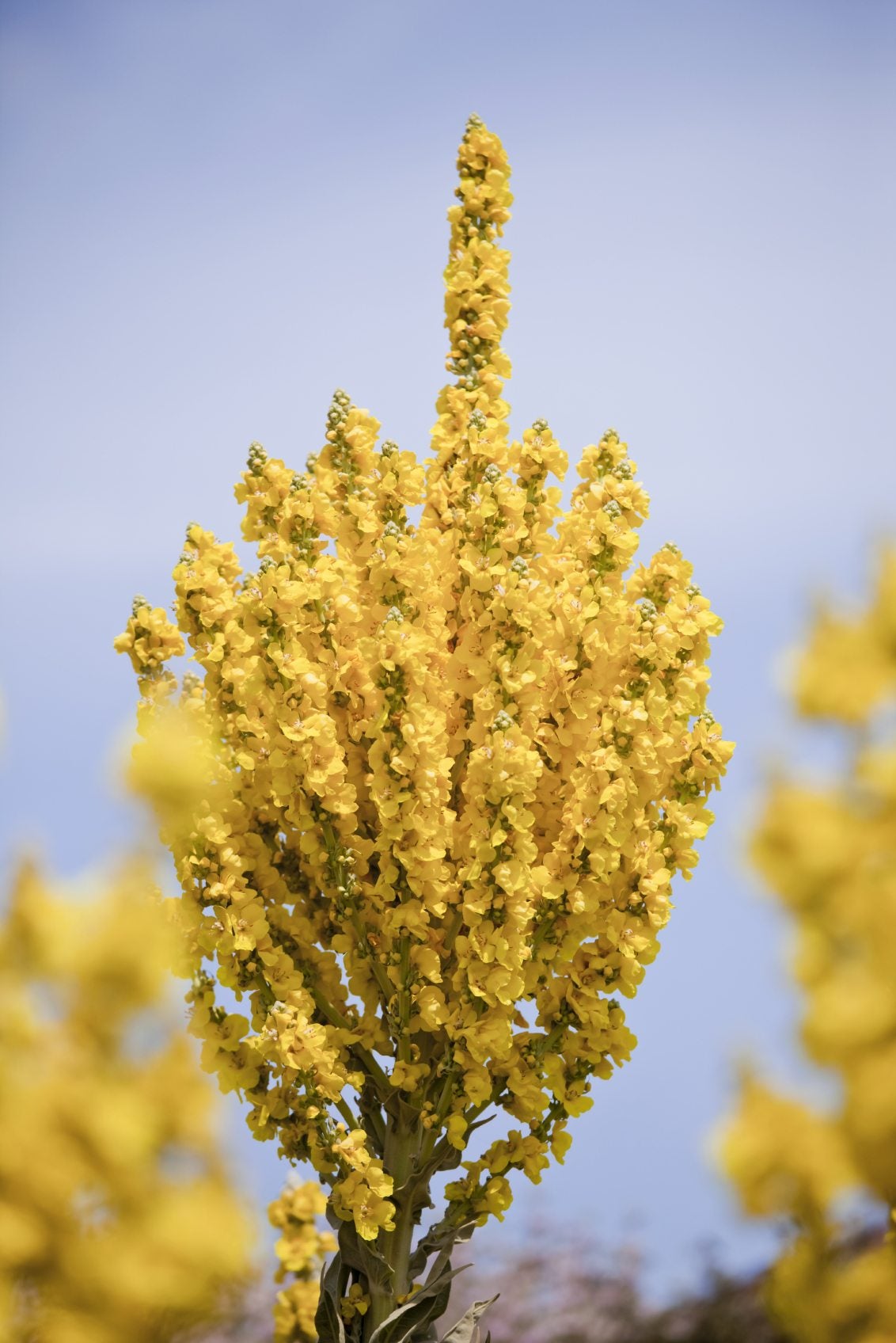What Is Mullein: Learn About Growing Mullein Uses And Disadvantages


You've likely seen mullein plants growing in fields and along roadsides. They're often attractive, with tall spikes of yellow flowering rosettes. This biennial plant, Verbascum thapsus, was historically used as an herbal treatment for coughs, congestion, chest colds, bronchitis, and inflammation.
Native Americans and soldiers during the Civil War era made teas from leaves of mullein plants to treat asthma. During the 1800's, settlers used it in their compounds to treat tuberculosis.
Information About Growing Mullein
Common mullein plants are large, erect specimens with huge, furry leaves and tall stalks of yellow flower rosettes. The attractive foliage and flowers, as well as mullein uses, lead some to grow mullein in gardens. However, common mullein produces seeds prolifically, leaving them for decades before germination.
Seeds often germinate in disturbed areas of roadways, fields, and riverbanks. This may lead the gardener to wonder, "What is mullein?" and “Should I think of growing mullein in gardens?"
Common mullein in gardens is considered a noxious and invasive weed in many states, but more than 300 varieties of ornamental mullein plants can grow in the garden or natural areas without abundant reseeding.
How to Grow Mullein in Gardens
Learning how to grow mullein is easy; just watch it grow once it has sprouted, if you have the common type. Varieties of mullein, or velvet plants, in gardens need a little more care. Mullein plants of the common variety can grow as tall at 10 feet (3 m.) when flowering. Once you've planted mullein in gardens, expect to spend time removing fuzzy rosettes if you don't want it to spread. Remove the flower stalk before seeds have dispersed to avoid abundant spread.
Hybrid types of mullein in the garden are not as invasive as the common type. Grouped together and called ornamental mullein, hybrid varieties are more suitable when growing mullein in gardens. Flowers in colors of white, pink, lavender, and yellow compliment the sunny garden. Wand mullein is another option for the sunny flower bed.
Gardening tips, videos, info and more delivered right to your inbox!
Sign up for the Gardening Know How newsletter today and receive a free copy of our e-book "How to Grow Delicious Tomatoes".
Ornamental mullein uses include any area with good drainage and full sun. Flower stalks are striking when in bloom. Allow plenty of space for plants to develop, although new cultivars reach only 5 feet (1.5 m.), with some bred to be only 18 inches (46 cm.) in height.
Most hybrids are biennials or short-lived perennials. Now that you've learned what is mullein, you can make an informed decision before growing it or letting it stay in your landscape.

Becca Badgett was a regular contributor to Gardening Know How for ten years. Co-author of the book How to Grow an EMERGENCY Garden, Becca specializes in succulent and cactus gardening.
-
 Looking For Plants To Give You The Soft And Fuzzies? Try These 5 Fuzzy Leaf Plant Options
Looking For Plants To Give You The Soft And Fuzzies? Try These 5 Fuzzy Leaf Plant OptionsLovers of texture, drama, silver foliage and tactile plants will adore these special sensory garden additions. These fuzzy leaf plant options will leave you all aglow
By Susan Albert
-
 Get Ready For A Summer Of Hummers! Grow These Full Sun Hummingbird Plants and Flowers
Get Ready For A Summer Of Hummers! Grow These Full Sun Hummingbird Plants and FlowersIf you’re lucky enough to enjoy a sunny backyard, make sure you are maxing out on your pollinator opportunities and grow these full sun hummingbird plants and flowers
By Tonya Barnett
-
 Mullein Herb Plants – Tips On Using Mullein As Herbal Treatments
Mullein Herb Plants – Tips On Using Mullein As Herbal TreatmentsMullein herb plants, which can reach heights of 6 feet (2 m.) are considered noxious weeds by some people, while others consider them to be valuable herbs. Click on the following article to learn about mullein herbal uses in the garden.
By Mary H. Dyer
-
 Deadheading Mullein Plants – Should I Deadhead My Verbascum Flowers
Deadheading Mullein Plants – Should I Deadhead My Verbascum FlowersMullein is a plant with a complicated reputation. To some it is a weed, but to others it is an indispensable wildflower. Even if you want to grow mullein, it's a good idea to deadhead its tall flowering stalks before they form seeds. Learn how to deadhead mullein in this article.
By Liz Baessler
-
 Greek Mullein Flowers: How To Grow Greek Mullein Plants
Greek Mullein Flowers: How To Grow Greek Mullein PlantsGrowing Olympic Greek mullein is not difficult if you plant the long-lived flowers appropriately and in the right spot. This article will help get you started with growing these interesting plants in your garden.
By Teo Spengler